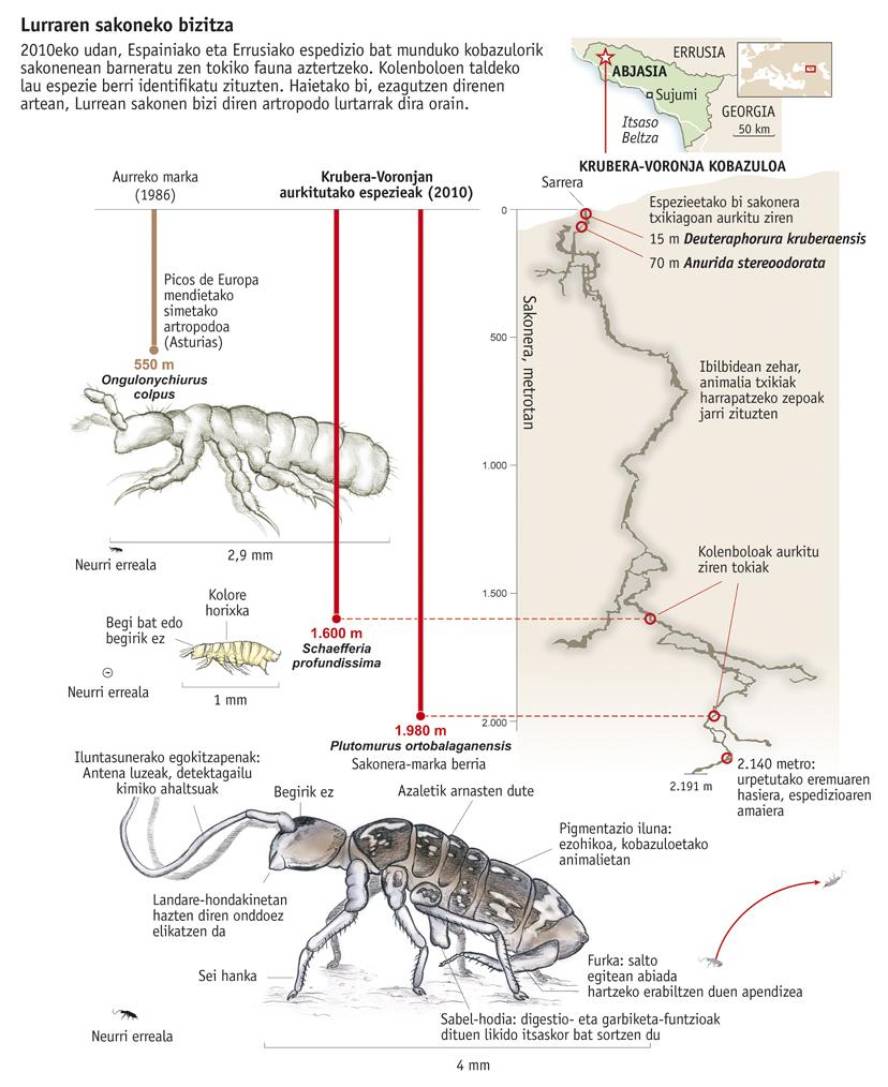The inhabitants of the deepest cave in the world
An expedition of researchers from Navarre and Russia has identified four new animal species in a cave in the Abkhazia area near the Black Sea. It is the deepest cave in the world --that is, it has a depth of 2,191 meters- and the two species found are the most found arthropods on Earth.
They all belong to the group of collemboli. The collemboli are numerous arthropod invertebrates, very close to insects, arachnids or crustaceans. For having the skeleton on on the outside and having articulated appendages (legs, antennas, etc.) are different. In addition, they have a special organ called a furka to jump. Due to the way of life they live in the cave, the four new species have specific characteristics to survive in extreme subsoil conditions, that is, total darkness and very small food.
"In response to these conditions, the animals found have no eye or pigmentation (color)", explains the zoologist Enrique Baquero and professor of the Master in Biodiversity, Landscape and Sustainable Management of the University of Navarra, one of the authors of the study. Baquero clarifies that organic matter can explain that these species live in such a hostile environment. "They feed on fungi that grow on organic matter and therefore contribute to their decomposition by forming a network of stable arthropod communities found in caves."
Each of the species has been found at a certain depth and its specimens have a length of between 1 and 4 mm. They are called: Anurida stereoodorata, Deuteraphorura kruberaensis and Schaefferia profundísima. The deeper finding, Plutomurus ortobalaganensis, has been found at 1,980 m below the surface.
The cave of Krubera-Voronya is the only cave in the world with a depth exceeding 2 km. There have been numerous expeditions that have been carried out, but this is the first time describing the interior fauna.






